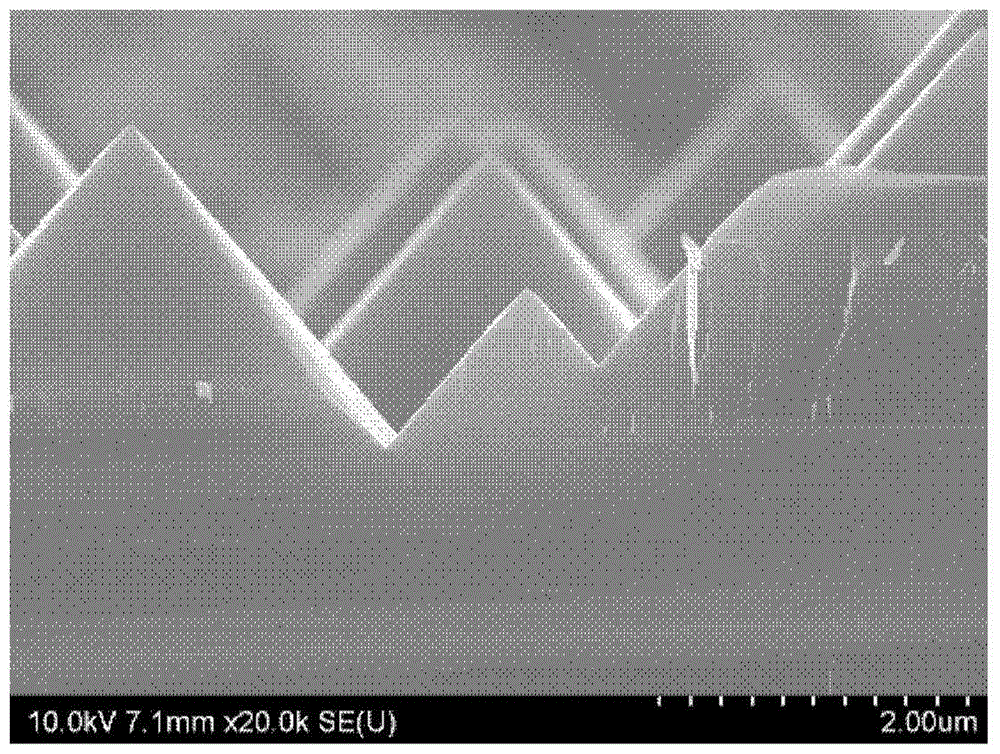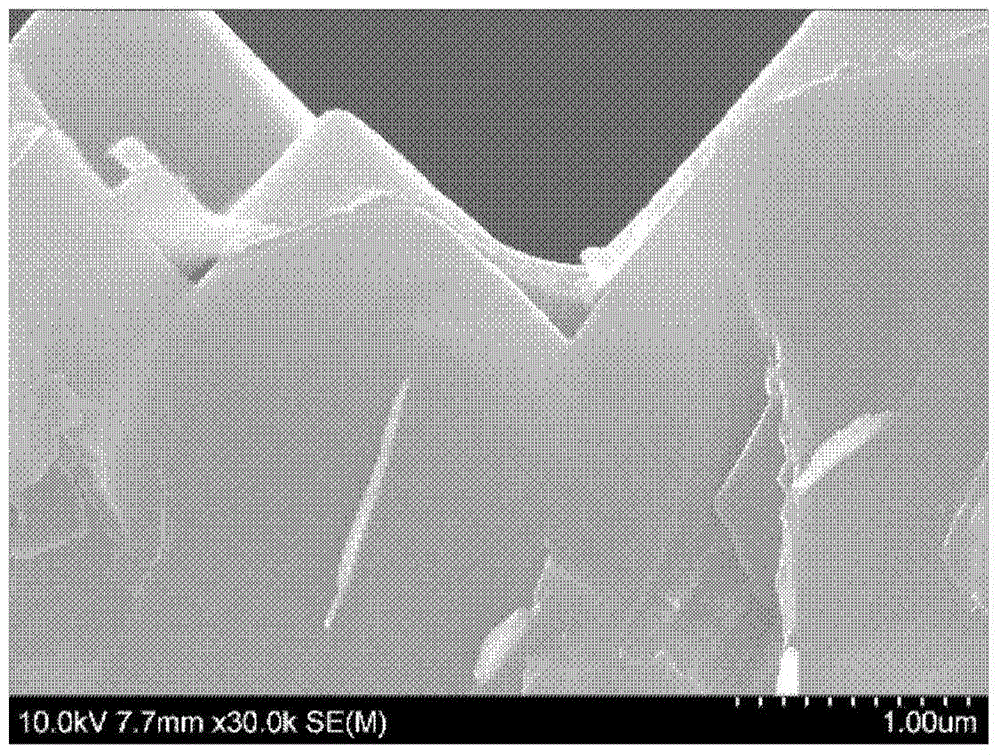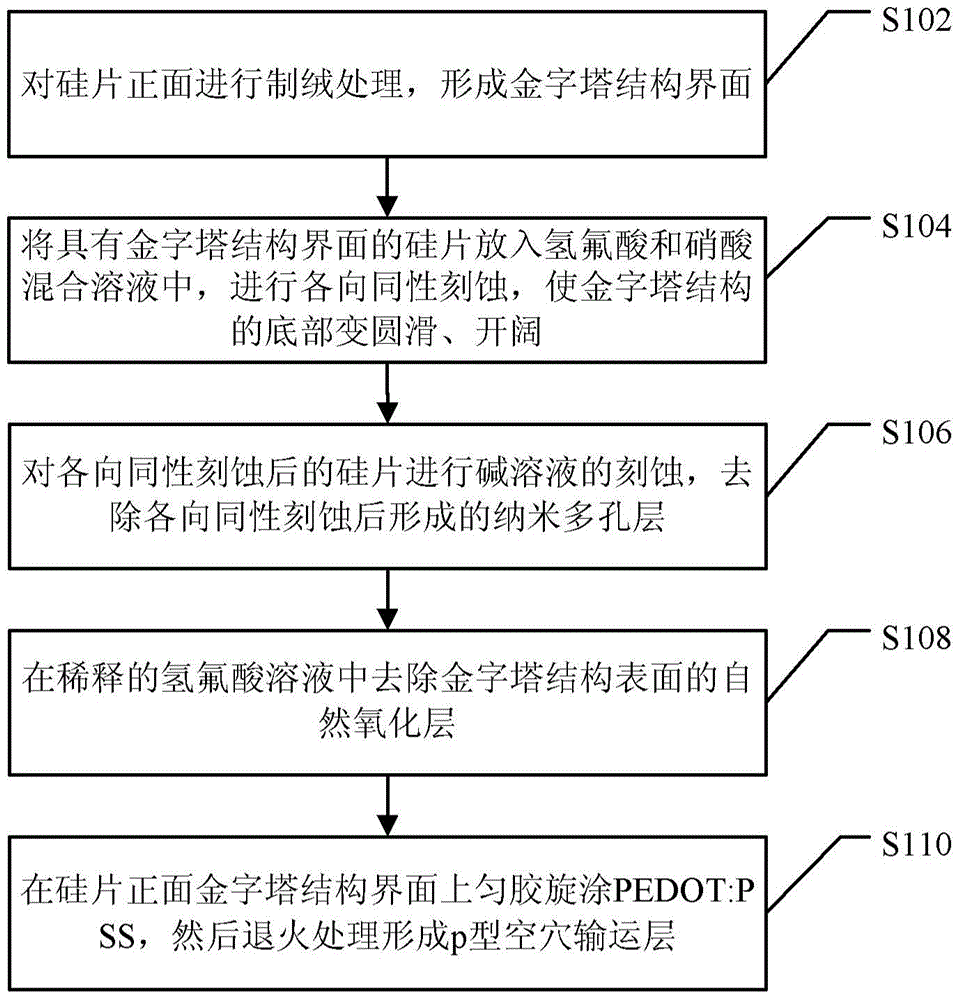Hybrid solar cell, method for manufacturing same, method for forming hole transport layer
A hole transport layer, solar cell technology, applied in circuits, photovoltaic power generation, electrical components, etc., can solve the problems of deteriorating the electrical properties of polymer films, thinning polymer film thickness, complex process steps, etc. Reflection effect, increase the area of the junction, the effect of improving separation and transmission efficiency
- Summary
- Abstract
- Description
- Claims
- Application Information
AI Technical Summary
Problems solved by technology
Method used
Image
Examples
Embodiment 1
[0039] In a first exemplary embodiment of the present invention, a method for forming a hole transport layer of an organic-inorganic hybrid solar cell is provided. image 3 It is a flowchart of a method for forming a hole transport layer of an organic-inorganic hybrid solar cell according to an embodiment of the present invention. Figure 4 It is a schematic longitudinal section view of an organic-inorganic hybrid solar cell according to an embodiment of the present invention. Please refer to image 3 and Figure 4 , the method for forming the hole transport layer of the organic-inorganic hybrid solar cell in this embodiment includes:
[0040] Step S102: Texturing the front side of the silicon substrate to form a pyramid structure interface;
[0041] After this step, the pyramid structure interface on the front side of the silicon substrate is as follows: figure 1 shown.
[0042] In this embodiment, the silicon substrate used is (100) crystal orientation, and the method for...
Embodiment 2
[0058] In a second exemplary embodiment of the present invention, a method for preparing an organic-inorganic hybrid solar cell is provided. Please refer to Figure 4 , the preparation method of the pyramid interface organic-inorganic hybrid solar cell of the present embodiment comprises:
[0059] Step S202: Texturing the front side of the silicon substrate to form a pyramid structure interface;
[0060] Step S204: Put the silicon substrate with the interface of the pyramid structure into a mixed solution of hydrofluoric acid and nitric acid, and perform isotropic etching to make the bottom of the pyramid structure smooth and open;
[0061] Step S206: Etching the isotropically etched silicon substrate with an alkaline solution to remove the nanoporous layer formed after isotropic etching to smooth its structure;
[0062] Step S208: removing the natural oxide layer on the surface of the pyramid structure in a diluted hydrofluoric acid solution (HF);
[0063] Step S210: therm...
Embodiment 3
[0070] In a third exemplary embodiment of the present invention, a method for preparing an organic-inorganic hybrid solar cell is provided. Please refer to Figure 4 , the preparation method of the pyramid interface organic-inorganic hybrid solar cell of the present embodiment comprises:
[0071] Step S302: Carry out isotropic etching with an acid solution on the n-type silicon substrate (100) after pyramid texture, wherein the concentration of HF is 0.5mol / L, and the concentration of HNO 3 The concentration is 7mol / L, and it is treated at room temperature for 4 minutes to make the bottom of the structure smooth and open, such as Figure 5 Scanning electron microscope image shown;
[0072] Step S304: Clean the silicon substrate after isotropic etching with deionized water, and then etch with 1mol / L KOH solution at room temperature for 60s to remove the nanoporous layer formed after isotropic etching, to smooth its structure, such as Figure 6 As shown in the scanning elect...
PUM
| Property | Measurement | Unit |
|---|---|---|
| thickness | aaaaa | aaaaa |
| thickness | aaaaa | aaaaa |
Abstract
Description
Claims
Application Information
 Login to View More
Login to View More - R&D
- Intellectual Property
- Life Sciences
- Materials
- Tech Scout
- Unparalleled Data Quality
- Higher Quality Content
- 60% Fewer Hallucinations
Browse by: Latest US Patents, China's latest patents, Technical Efficacy Thesaurus, Application Domain, Technology Topic, Popular Technical Reports.
© 2025 PatSnap. All rights reserved.Legal|Privacy policy|Modern Slavery Act Transparency Statement|Sitemap|About US| Contact US: help@patsnap.com



